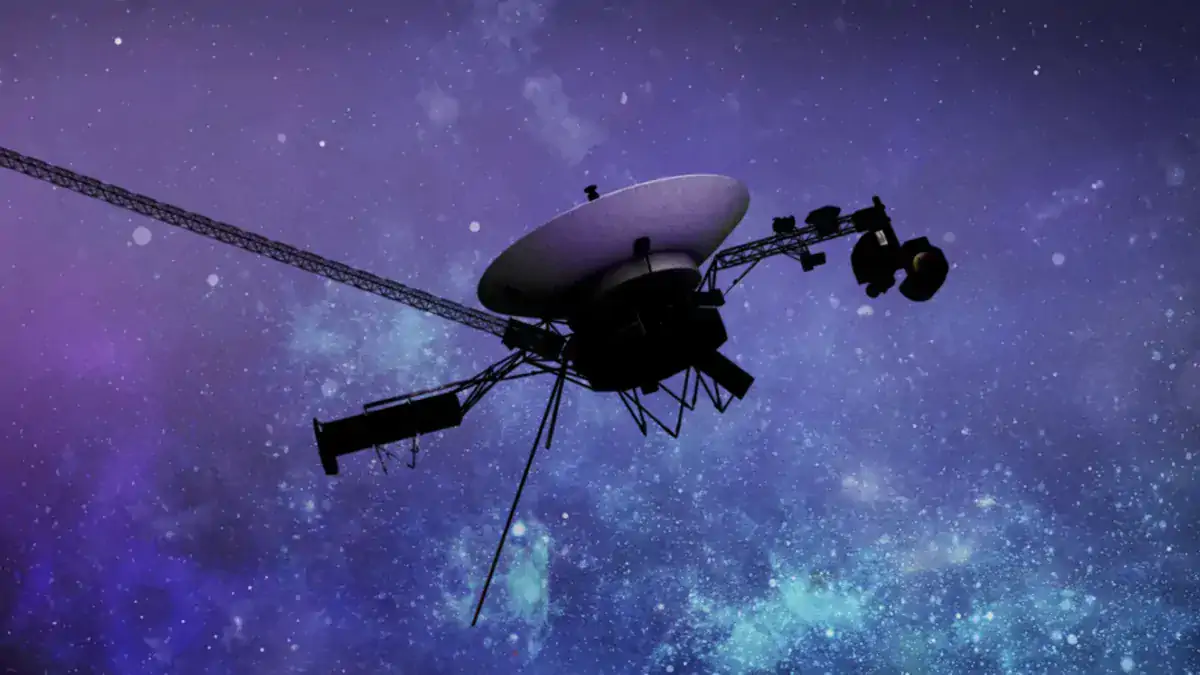NASA engineers are undertaking their last rounds of efforts in a final push to re-establish communication with Voyager 1. As the second-longest operating spacecraft in history, Voyager 1 has ventured more than 24 billion kilometers (15 billion miles) from Earth, securing its place as the farthest-traveled object crafted by humanity.
NASA announced in a statement that since mid-November 2023, the interstellar Voyager 1 probe has encountered difficulties transmitting data gathered by its scientific instruments back to Earth.
Launched in 1977, Voyager 1 is not just the first spacecraft to travel into interstellar space (making it the farthest human-made object ever), but it has also made some other substantial discoveries. It found new moons around Jupiter, spotted another ring around Saturn, and took a special picture of all the planets together in one shot, like a big family photo.
"Sad and frustrated to have the spacecraft still working but muted. Even though we know the end could come at any time, losing a spacecraft is never easy. Especially one like Voyager 1," said Bruce Waggoner, the Voyager mission assurance manager, in a conversation with Space.com.
Flight data system
NASA engineers are currently addressing an issue concerning one of the three onboard computers of Voyager 1, known as the flight data system (FDS). Although the spacecraft is successfully receiving and executing commands from Earth, the FDS is experiencing communication difficulties with one of its subsystems, the telemetry modulation unit (TMU). Consequently, according to NASA, no scientific or engineering data is being transmitted back to Earth.
The FDS has multiple functions, including collecting data from scientific instruments and monitoring the spacecraft's health and status. It then consolidates this information into a single data package for transmission to Earth via the TMU. This data is encoded in binary form, comprising combinations of ones and zeros, which form the basis of all computer language.
In December, the telemetry modulation unit (TMU) started transmitting a recurring sequence of ones and zeros, indicating a potential "stuck" condition. After eliminating other potential causes, the Voyager team identified the flight data system (FDS) as the source of the problem. Later, attempts were made to reboot the FDS and restore it to its previous operational state, but unfortunately, the spacecraft continues to fail to transmit usable data, according to NASA.
Challenging issues
Consulting original documents written decades ago by engineers who did not foresee present-day issues is often necessary to address challenges encountered by the probes. According to the space agency, this process requires considerable time for the team to grasp how a new command might impact the spacecraft's operations, thus preventing unintended consequences.
Furthermore, increasing the challenge is that all commands dispatched from mission controllers on Earth require 22.5 hours to reach Voyager 1, which is currently exploring the outer reaches of our solar system, over 15 billion miles (24 billion kilometers) from Earth. Consequently, the engineering team must patiently wait 45 hours to receive a response from Voyager 1, enabling them to assess whether a command produced the desired outcome.
"This week, the team will send more commands to the spacecraft to gather information about the status of the onboard systems. In the coming weeks, the team expects to start making more aggressive attempts to reset various systems that might influence the FDS," said NASA engineers in a conversation with .
Voyager 2, the sibling of Voyager 1, was launched just 16 days after its counterpart and continues to function effectively. Managed and operated by NASA's Jet Propulsion Laboratory in Southern California, these probes are unique in their exploration of interstellar space—the expansive realm traversed by our Sun and its accompanying planets.




 BlocksInform
BlocksInform










